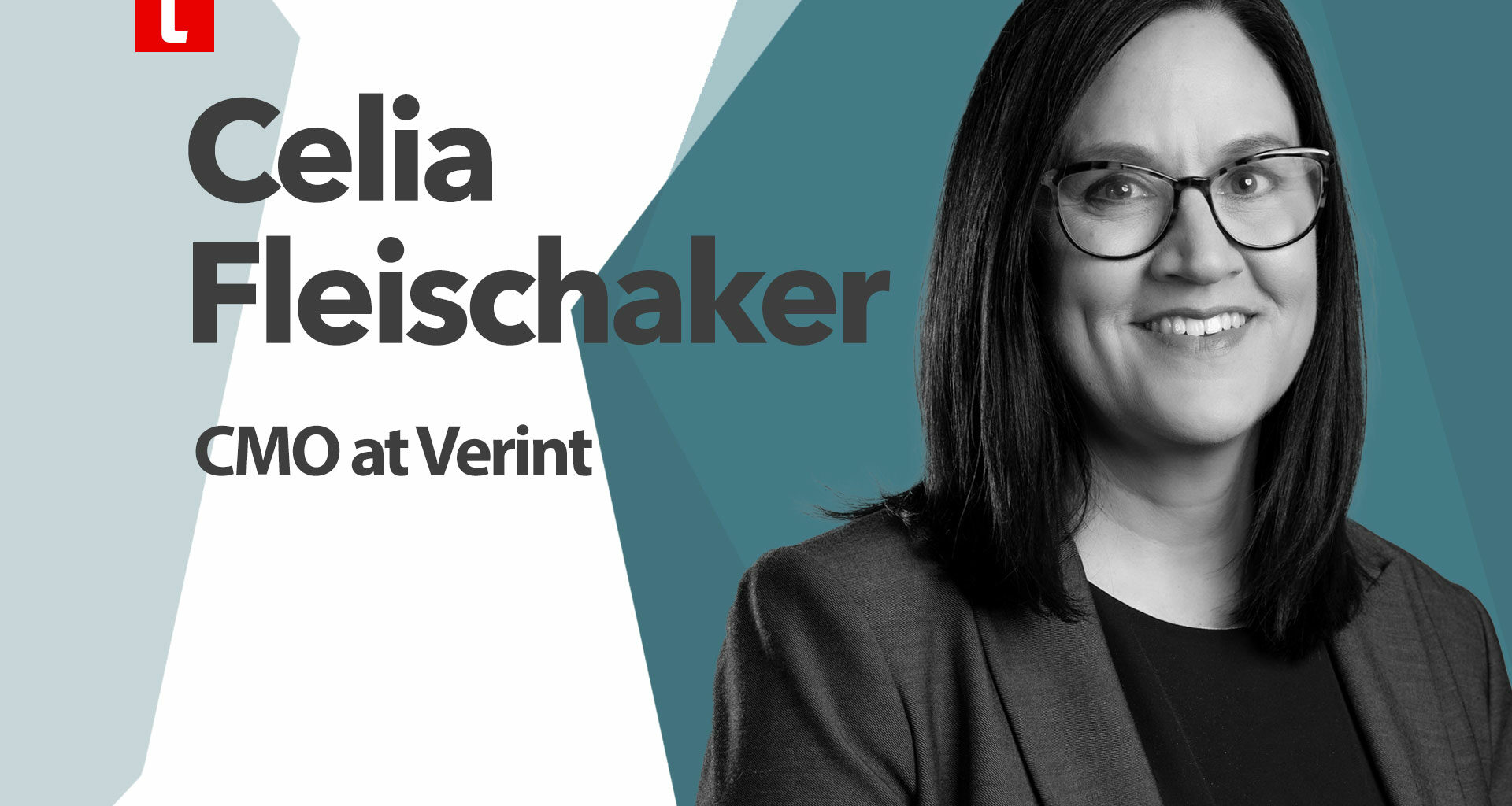In this episode of Conversations with TheCustomer, we chat with Celia Fleischaker, CMO of Verint, about their latest study – The 2022 Engagement Capacity Gap. The report reveals, among other things, a widening gap between consumer expectations and brands’ abilities to keep up with them.
Full transcript below.
TheCustomer
Today I’m with Celia Fleischaker, who is CMO at Verint and we get to talk about the latest study they put out – which I’ve poured over back and forth – because I find this stuff fascinating. The Engagement Capacity Gap Study, which implies about 10 million different things to me. So, we’re going to unpack all that. But first of all, Celia, thanks for joining me i really appreciate it hi mike thank you so much for having me and to to spend some time with us on this study.
Celia Fleischaker
It’s great to talk with you.
TheCustomer
For sure! So, let’s just start with the name of this report. What does that really mean – The Engagement Capacity Gap. Let’s start there.
Celia Fleischaker
Yeah, I mean it’s something that we’re seeing brands struggle with more and more and it’s a study we did last year, we repeated it again this year, because we thought the results were pretty compelling. And typically, what’s happened is we’ve seen that a number of companies as they’ve dealt with the shift to digital, like all these consumers moving to digital channels, it’s really increased the amount of interactions that they’re having. And as they’re having this increased number of interactions, increased number of channels, they’re also seeing consumer expectations elevate. And at the same time, as that’s ramping up, you’re really seeing the resources, the budget from a workforce perspective, remain relatively flat. And the workforce is going through a lot of disruption as well and so it’s creating this pull and this tug, and it’s creating a gap that’s widening and that’s the engagement capacity gap.
TheCustomer
So, I think maybe the easiest way to do this, because there’s so much in this study, is to start at a couple of top line numbers that you’ve pulled out and just let’s just talk about them. Because you know, I think on the surface, it’s easy to see that some of these things are happening. But what’s interesting about your study is we get to understand why. So maybe we’ll start there.
Celia Fleischaker
Yeah, I think just top level, a couple of things that we’re seeing. One: people think it’s going to get harder which, I think, it was a little sobering reading the results. Nearly 80 percent of customer engagement professionals and it was based on about 2700 customer engagement professionals that answered the survey. They think the challenges with customer engagement are going to get even more difficult this year and it’s really centered around a couple of different themes. One is how do they deal with supply chain disruptions like that we hear a lot about that on the news. And it’s continuing to be an issue and it’s impacting how they’re dealing with customer engagement. We’re seeing a lot of disruption from a workforce perspective. So, people are working from home, some are starting to go back to the office. There’s the great resignation which is causing issues with retaining and hiring talent and then finally, there’s that shift to digital channels that we talked about. So that customer engagement becomes a lot more complex than maybe it has been in the past because of the number of channels and having brands have to meet that consumer on their channel of choice. So, the consumer’s more in the driver’s seat.
TheCustomer
So there probably aren’t a lot of customer engagement professionals that would argue with any of those assessments because everybody feels that pain on some level you know. It’s common I think, throughout this particular space. If you don’t mind let’s talk about each one of those big findings and just kind of pull apart a little bit because what’s in there, I think, can help professionals in this particular universe navigate some of those challenges. So, the first stat I thought I’d just pull out is 76 percent of leaders believe customer engagement challenges will increase in 2022. My only surprise was that it was only 76 – that implies there’s, you know, there are 24 percent of the people out there that think that they’ve got this kind of wired and to me that just seems crazy.
Celia Fleischaker
I don’t know if it’s they think they’ve got it wired or they think that my goodness after the challenges of the last year it can’t be harder. But yeah, I think it’s still a high number and it’s a tough space to be in but it’s also exciting because yes, challenges but a lot of opportunity here too.
TheCustomer
So, if they’re saying customer engagement challenges will increase, are you able to, with the data you have in front of you – and I don’t want to go too deep in the weeds – are you able to talk about what went into that number?
Celia Fleischaker
Yeah, I mean that’s a broad-brush number where we asked them is it going to get harder. The challenge is going to get more significant but we did ask them – we dove in a little bit and said you know, what are the greatest areas that are impacting customer engagement? What’s causing you to have a more challenging year? And there were a few things they talked about.
There’s a lot around workforce especially how are they dealing with staffing shortages. A lot of the people that we’re talking to are working with contact centers and typically you have higher turnover there. But now with the issues happening with workforce and the great resignation, turnover is increasing. You’re having a harder time finding that talent and onboarding it especially in the environment where you’ve got people working in a more decentralized manner.
I think too, the other thing that people kept pointing out was this combination like the shift to digital, the increased number of channels. A lot of companies are engaging across different channels but tying those engagements together – making sure it’s seamless – this consumer shift from one to the other is really quite complex.
TheCustomer
We’ve seen data recently that takes a part of that. It’s called the Customer Expectation Index and it’s an ongoing measurement of how customer expectations within a category compare to actual brand performance in that category. And it’s just really interesting stuff. But I think it kind of mirrors what you’re saying here that there’s a widening gap between what customers really expect as kind of baseline interactions. You know, these are table stakes and what companies are really achieving. And it seems like – and I don’t want to put words in your mouth – but it seems like what you’re what your study uncovered here kind of pulls that apart a little bit more and looks at the individual challenges and maybe some of the tool sets – which by the way I want to talk about a little bit for folks that may not know or be that familiar with Verint. I’m only assuming that you have tools in your platform, in your array, that can address some of this.
Celia Fleischaker
Yeah, just a little! Absolutely – so we’ve been in the business of customer engagement making those engagements work better for both the brand and the company for more than 20 years. And the cloud platform that we go to market with is really one that helps a brand use technology to build a differentiated experience and really manage that interaction and that experience at a higher level. And specifically, you know, we’ve worked done a lot of work in contact centers but a lot of the platform that we have is around the rest of the organization and where they engage with customers.
So, if it’s conversational AI on a website, or a community’s platform, we’re bringing all of that together and connecting those different silos and that technology to build a better and a more seamless experience. So again, that’s what we’re talking about.
TheCustomer
It would seem like you have a fairly good stake in this game to try and understand and deliver those insights to people who can really use them.
Celia Fleischaker
Yeah, we’ve got about 85 of the fortune 100 that trust Verint and partner with Verint to help them with customer engagement.
TheCustomer
Not bad. Let’s see, the next big number I see here – 71 percent find retaining talented workers to be moderately or highly challenging. And again, you know we read an awful lot about the great resignation, etc. But can you talk a little bit about the specific categories or verticals where Verint is seeing the biggest challenges there?
Celia Fleischaker
Yeah, I don’t know if I have specific numbers at an industry level. I’ll say we’re seeing that challenge in really almost any industry that we’re talking to. And I don’t think it’s limited to customer engagement professionals although it might be a little more acute there. It’s tough and the thing that we keep hearing over and over is “how do we solve for that”? Like, what are we doing to help brands retain – and not only retain the talent they have – but bring on new talent and develop it, and there’s retention. It comes back to, it’s a lot of the same things you talk about.
It’s like the flip side with customers. You know, with customers they want to be understood they want to be valued. They want you know, to have their expectation met. It’s the same thing with employees and we’re actually seeing a lot of the same technology applied to helping with this issue. So how do I make sure I’m hiring the right people, that I give them all the tools they need to perform well in the job, and then how do I develop and coach them so that their jobs are easier? Because they’ve become harder over the last couple years.
A lot of the simple interactions and engagements that happen with a customer are happening in a self-service channel when it moves up to that agent and they’re dealing it’s typically a really complex issue and they’ve got to have the right systems tech processes people around them to help them be able to handle that.
TheCustomer
Well, I don’t know if Verint participated at NRF this past year – we were there virtually. But one of the big themes that came out of our discussions after that was that the technology providers figured out pretty quickly that the way they needed to frame themselves to solve problems, was that there are fewer workers and even if there weren’t fewer workers, the people who are there are being tasked with more because expectations are higher. So you know, it’s a pretty compelling case for investing in technology that lightens the burden for especially front liners.
Celia Fleischaker
Yeah, I think so. And I think more and more people are seeing that connection between employee experience and customer experience. And I think especially with NRF, and in retail you know you can draw that line very quickly. And so, they’re looking for things that help out on that employee side.
TheCustomer
Celia, I’m so glad we were able to connect. Thanks so much for your time and for your insight, adding context to this study. Thanks again.
Celia Fleischaker
Thank you, Mike – it’s been a pleasure.













